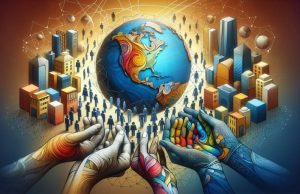In the bustling economy of New York, where industries range from finance and tech to arts and manufacturing, the workforce is as dynamic as the city itself. However, this vibrancy comes with its set of challenges, particularly when it comes to ensuring that the workforce keeps pace with rapid technological advancements and evolving industry demands. The skill gap, an ever-looming issue, threatens to undermine the city’s economic vitality unless addressed with strategic forethought and collaborative effort. Herein lies the focus of our discussion: strategies for cultivating a future-ready workforce in New York’s competitive job market.
The Current Landscape: A Closer Look at New York’s Skill Gap
The skill gap in New York is not just a theoretical concern; it’s a practical impediment to growth. As certain sectors expand, they seek talent equipped with a new set of competencies – digital literacy, data analytics, and AI expertise, to name a few. Yet, many job seekers find themselves on the periphery, lacking these essential skills. The result is a mismatch between the needs of employers and the qualifications of the labor pool.
Industry and Education: A Symbiotic Relationship
To bridge this gap, it is imperative for companies and educational institutions to form strong partnerships. By understanding the specific needs of industries, educators can tailor curricula that are both relevant and pragmatic. Initiatives like ‘Tech Talent Pipeline’ in New York have demonstrated the power of such collaborations, where industry leaders guide academic programs to nurture the next wave of tech-savvy professionals.
Lifelong Learning and Professional Development: The Imperative of Up-skilling
The concept of a job for life is long outdated. Today’s workers must be adaptive, continually adding to their skillsets. Employers in New York can play a pivotal role by offering professional development opportunities. Upskilling programs can breathe new life into the workforce, ensuring that employees not only retain their value but enhance it.
Apprenticeships and Internships: Earning While Learning
Practical experience is priceless. Apprenticeships and internships afford individuals the opportunity to learn on the job, making them especially effective for skill acquisition. They serve as bridges, allowing for a smoother transition into the workforce, particularly in specialized trades or sectors where academic training alone is insufficient.
Vocational Training: Honing Industry-Specific Skills
Vocational training programs, both within and outside the traditional education system, can provide targeted skill development. They are essential for readying job seekers for specific roles, thereby reducing the skills gap in technical and trade positions.
Job Matching Strategies: Aligning Talent with Opportunity
New York is a melting pot of opportunity, but connecting the right candidate with the right job remains a challenge. Innovative job matching platforms, which utilize AI to map skills to job requirements, are showing promise in streamlining this process. Such technology, coupled with human expertise, can better align the workforce with the needs of the job market.
In Conclusion
New York’s job market is a microcosm of global trends, reflecting broader economic shifts and the necessity for a versatile, skilled workforce. By investing in education-industry partnerships, promoting continuous learning, and fostering practical, hands-on training, we can bridge the skills gap. The strategies discussed here not only address the immediate needs of employers but are also integral to the long-term economic prosperity of both individuals and the city at large. Embracing these approaches, New York can model a future-ready workforce that is the envy of cities around the world.
Join us at The Work Times as we continue to champion a workforce that thrives on innovation, inclusivity, and resilience. The key to unlocking the city’s full potential lies within the talents and competencies of its people. Let’s rise to the challenge together.

























